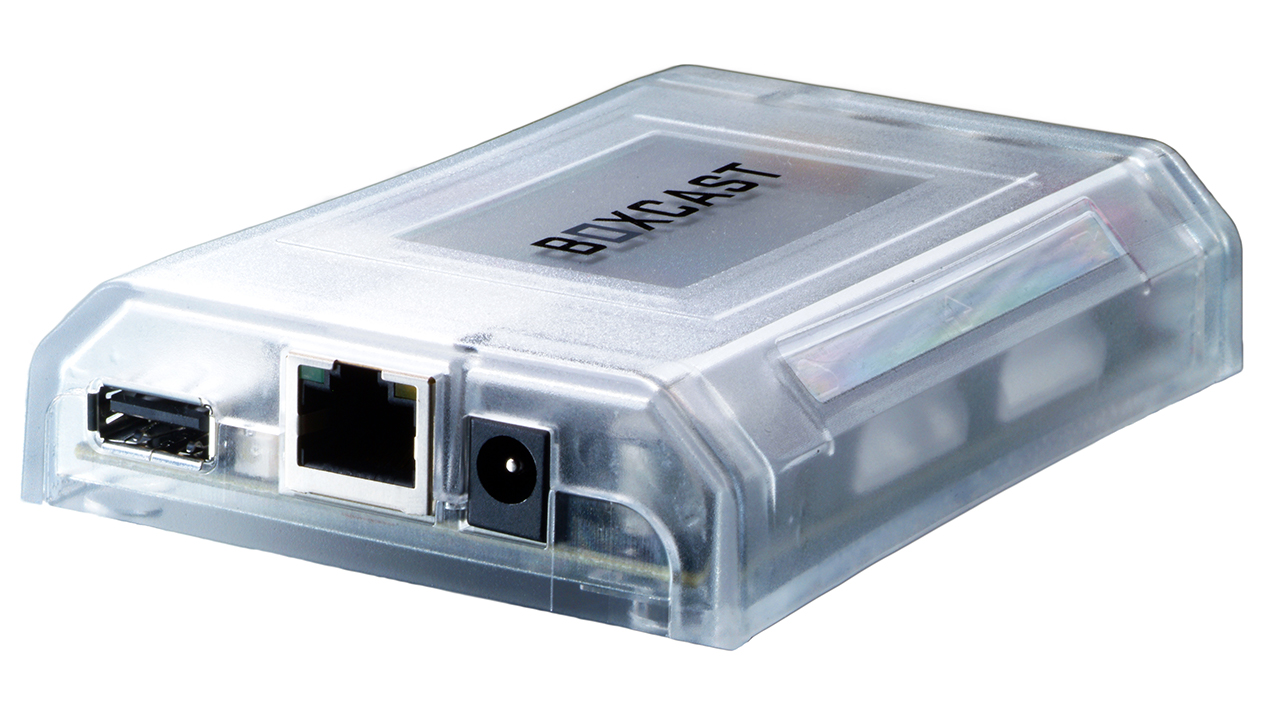
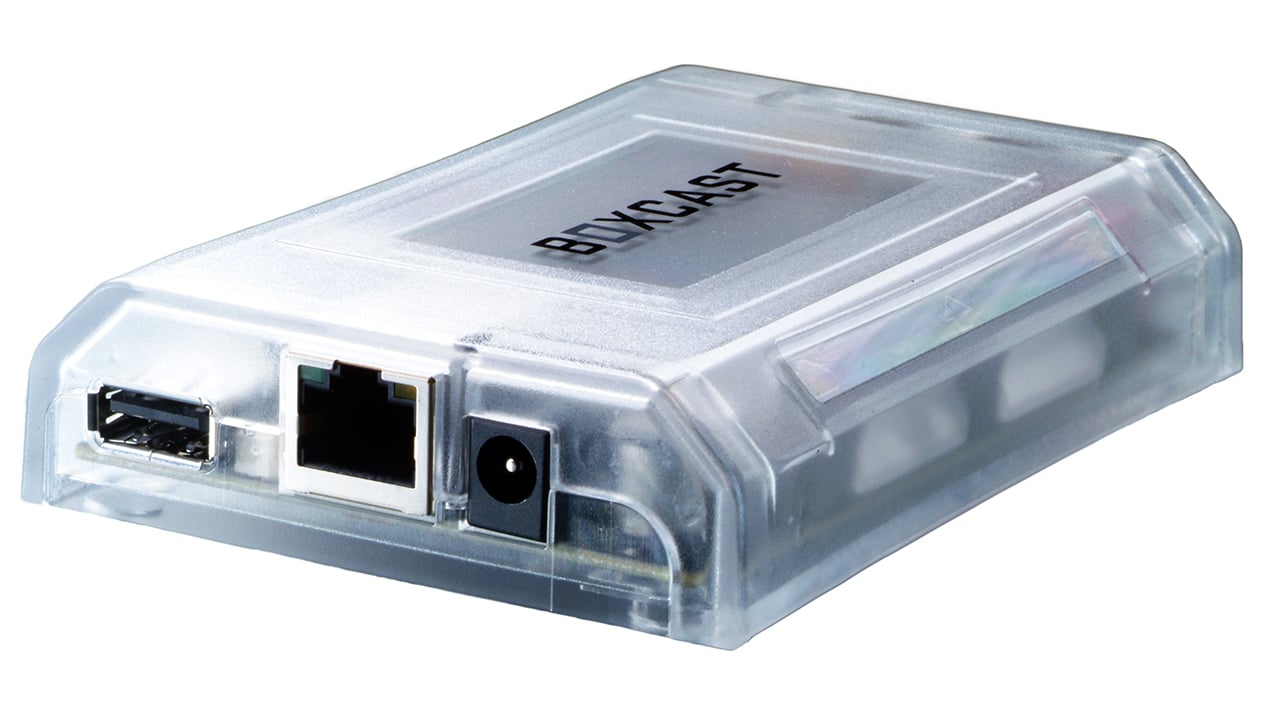 The simple, but powerful Boxcaster device
The simple, but powerful Boxcaster device
Review: Don't let the straightfoward appearance fool you. Phil Rhodes finds beauty in the simplicity of the BoxCaster internet broadcast device from BoxCast.
BoxCast has sent us one of its BoxCaster devices to look at, which is great. Immediately, though, we encounter something that's rather unusual, but sure to become more common as national and global networks get faster and faster: the capability of BoxCast isn't really in the box.
As the name suggests, BoxCast is a company – a service, really – that allows people to broadcast video on the internet. This isn't a novel idea, although to date it's often involved quite a bit of technical setup. Services such as the games streaming platform Twitch have gone out of their way to make things easier, but setting many systems up to produce arbitrary streams, say for a small music concert or local sports match, can involve a lot of typing twelve-digit numbers into boxes. The purpose of BoxCast seems to be to make this absolutely as simple as can possibly be achieved with the available technology (though it can also stream to RTMP targets just such as Twitch.)
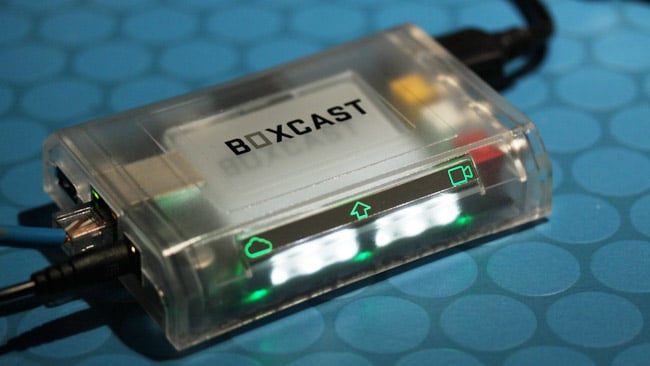
BoxCaster hardware
Most of what makes BoxCast's service interesting is, in the modern parlance, cloud-based, or, more literally, done on remote servers. The BoxCaster itself is a neat little widget that's almost painfully minimalistic and therefore extremely easy to use. Supply power, network connection and HDMI video, and it's just a case of logging into the company's web interface and setting up a broadcast. There are no settings at all on the local device; it's hardwired to seek out internet access (using DHCP, which must be enabled on the network, which is invariably the case by default) and contact the company servers.
Via these servers, a BoxCaster will receive firmware upgrades and stream video and audio to a potentially worldwide audience. The lion's share of the work, then, is being done on remote servers, which allows for a number of useful things. For a start, the same BoxCaster will work anywhere on the global internet. The company tells us that things work at their best on a hardwired, copper connection, although wifi and cellular network services can reportedly work in a pinch (we didn't try it.)
One of the technical advantages of the BoxCast approach is that the servers can create all the different versions of the video that might be required for different devices, so compatibility with every smartphone, computer and tablet becomes a nicely centralised problem that BoxCast will deal with. Also, the network link isn't stressed by the need to upload several versions of a single piece of video; that happens server side, where, we're told, there's enough bandwidth to support very large numbers of viewers, which otherwise might not be the case. BoxCast's player application is available for all the principal platforms and can be embedded with other web content.
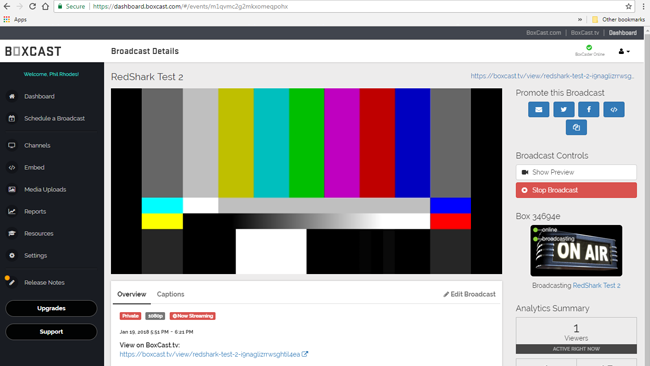
Broadcast in progress. The bars here are being streamed from a camera
So far, so good: BoxCast has engineered what we might call a minimum-intervention streaming system, and it can be online and working minutes after opening the box. Simplicity is clearly the intent and it works nicely. The actual user interface, where we control what our audience can and should see, is more administrative than technical. BoxCast's system allows broadcasts to be scheduled, recorded and then played back later, restricted to ticketholders (including taking payment for tickets) or via time-limited free previews. There are tools to overlay scoreboards, as for a sports game, and to produce reels of highlights. Geographic blocking is available based on an IP location and extensive analytics are provided. It's pretty complete.
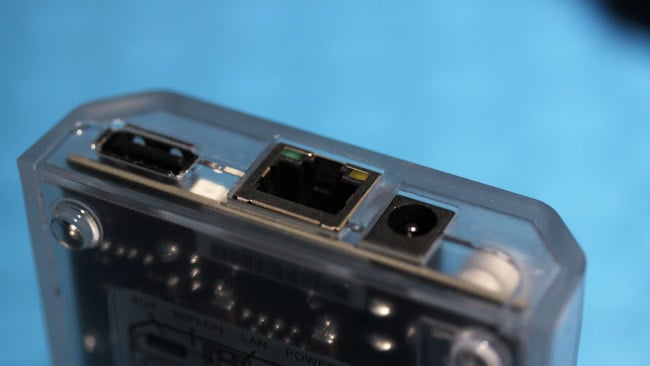
Power, network and USB
As with any service which requires the company to maintain servers, there is a subscription-based pricing model. The company's website is slightly cagey about this cost, presumably because they cater for people with an audience of five, which costs almost nothing in bandwidth, up to large events with a seven-figure viewership, which costs a lot in bandwidth. Packages start at US$19.99 a month, which will be affordable even in the most modest of circumstances. All of the literature, meanwhile, suggests that BoxCast intend the service to be used by anything from a single camera connected directly to the device, all the way up to a full outside broadcast scenario with multiple cameras and vision mixing, as in any live event. As if to confirm that speculation, BoxCast has announced the BoxCaster Pro, which offers a sturdier exterior and SDI inputs; the BoxCaster as reviewed here has only HDMI inputs for digital video. The servers, the software, and the back end will, presumably, be the same.
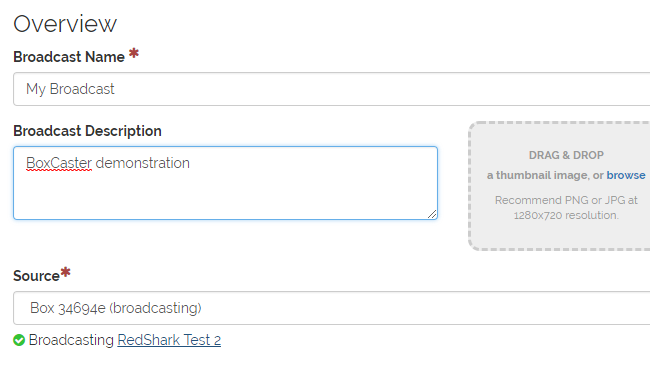
Scheduling a broadcast
Functionally, the BoxCast platform works well. It's difficult to be specific about the video quality of systems like this; the codecs used, and the software which controls them, tend to alter their performance in response to a huge number of variables, but it looks fine. BoxCast's system does impose one extra generation of compression because it must recompress the uploaded stream for at least some devices, given the policy of creating different resolutions, for different devices, at the server end.
There's quite a lot of latency – we measured a minute or slightly more – which is probably more than most people will expect. There are technical reasons why it's effectively impossible to achieve the low latency of something like Skype when the stream is going out to hundreds, thousands or millions of people, as opposed to one or two. Still, this amount of delay effectively makes certain kind of events – such as a phone-in – difficult, and might be a reasonable target for improvement. The problem is that those improvements might require alterations to some fairly fundamental pieces of internet infrastructure. We'll have to wait and see.
In the end it's intended to be simple and it is: most of the joy, and the sheer engineering effort, is in the online service. To use the terminology of the hour, it's a cloud-based content distribution network, with all the benefits of expandability that implies. The BoxCaster device itself sells for US$499, and the only disappointment for technical people is that there aren't more buttons to press – because it's been designed to work without needing any buttons at all.
Tags: Studio & Broadcast


Comments